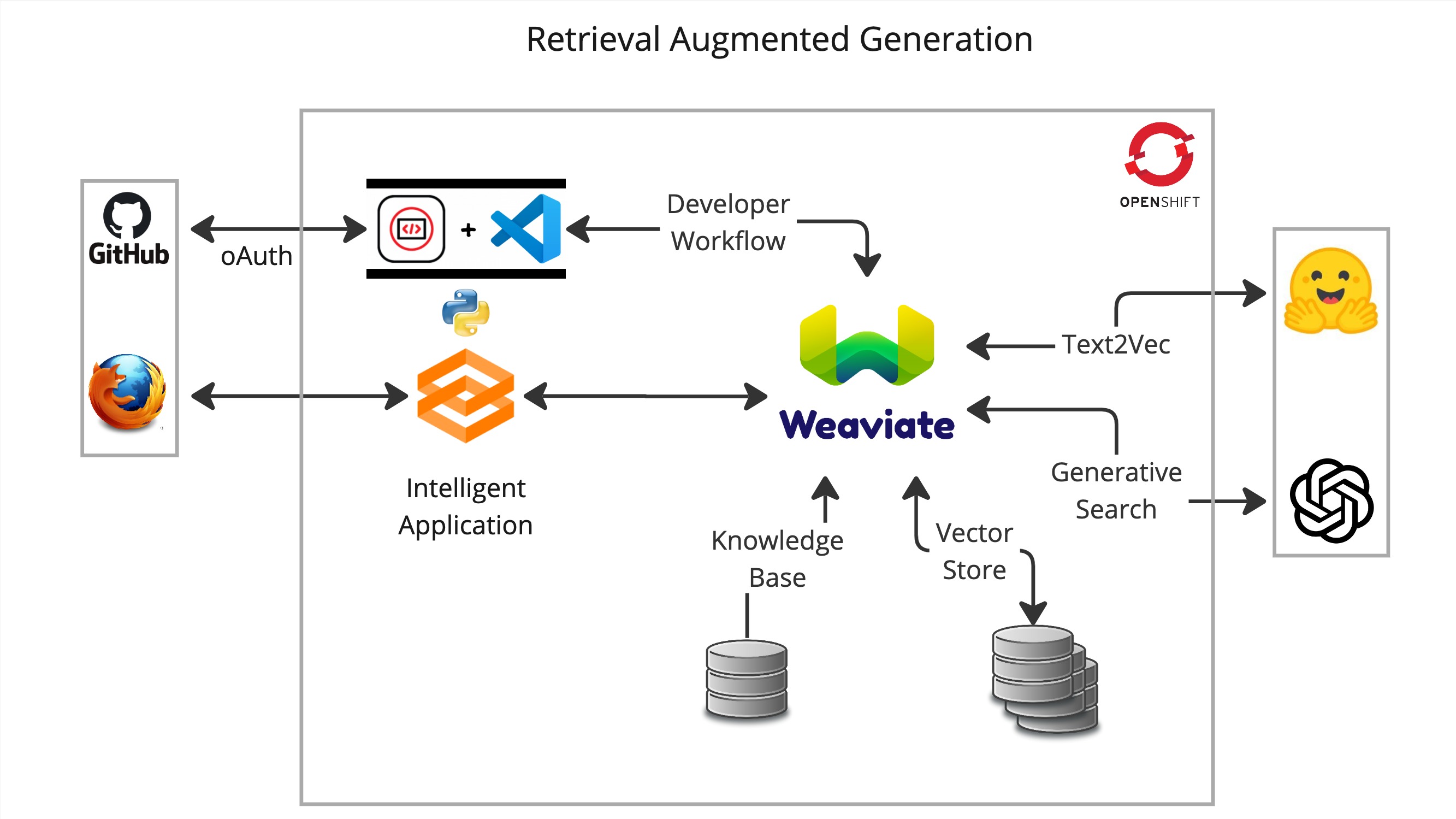JumpStart your Vector Database to enterprise scale with Openshift
- Access to a free Openshift Developer Sandbox.
- A HuggingFace API key.
- An OpenAI API key.
- Support for Distributed Architectures.
- A Great Developer Experience (Easily move code -> containers)
- Access your cluster via the Weaviate Cloud Console with external routes.
- Security (Doesn't run your containers as root)
- A full IDE experience with a code debugger.
- Leverage many VSCode extensions.
- In cluster terminal with CLI access to the Openshift API.
- Deploy and test your app with port forwarding.
- GitHub integration improves workflow efficiency.
- Environment variables are read in as secrets.
- DevSpaces is a no-cost add-on to Openshift
- View -> Command Palette -> Enter:
dev spaces: open openshift console. - Use the Openshift Web UI to create a secret with environment variables.
- Secrets -> Create and Save a new secret (from yaml) using this example.
- Edit -> Change the values in the secret to match your environment. Your instructor will provide the values.
- Extensions -> Install the reccomended Python extension.
- View -> Command Pallette Enter:
run task-> devfile -> Create the python virtual environment - Terminal -> New Terminal
- Use the helm client to install Weaviate and wait for the 2 weaviate pods to become ready.
PROJ=$(oc project -q)helm repo add weaviate https://weaviate.github.io/weaviate-helmhelm upgrade --install weaviate weaviate/weaviate --namespace ${PROJ} --values ./values.yamloc get pods -wcurl weaviate.${PROJ} | jq- Run a few python test clients from the
srcdirectory.
python src/00-test-connection.pypython src/03-gradio.py- From the terminal, create an Openshift application.
oc new-app python~https://github.com/bkoz/weaviate --context-dir=/src --name=rag- Create a secret for the application environment variables from the example.
oc apply -f resources/app-env.yaml- Use the web console UI or CLI to edit the values in the secret to reflect your environment.
- Add the secret to the rag deployment.
oc set env --from=secret/app-env deployment/rag- Expose the app with a route.
oc create route edge --service rag --insecure-policy='Redirect'oc delete all --selector=app=rag
helm uninstall weaviate- Create a mini-cluster by installing Code Ready Containers
- Install an OKD cluster and Eclipse-Che.
- Install an Openshift cluster and DevSpaces.
- As a managed service from any of the major cloud providers.
v0.1.0
